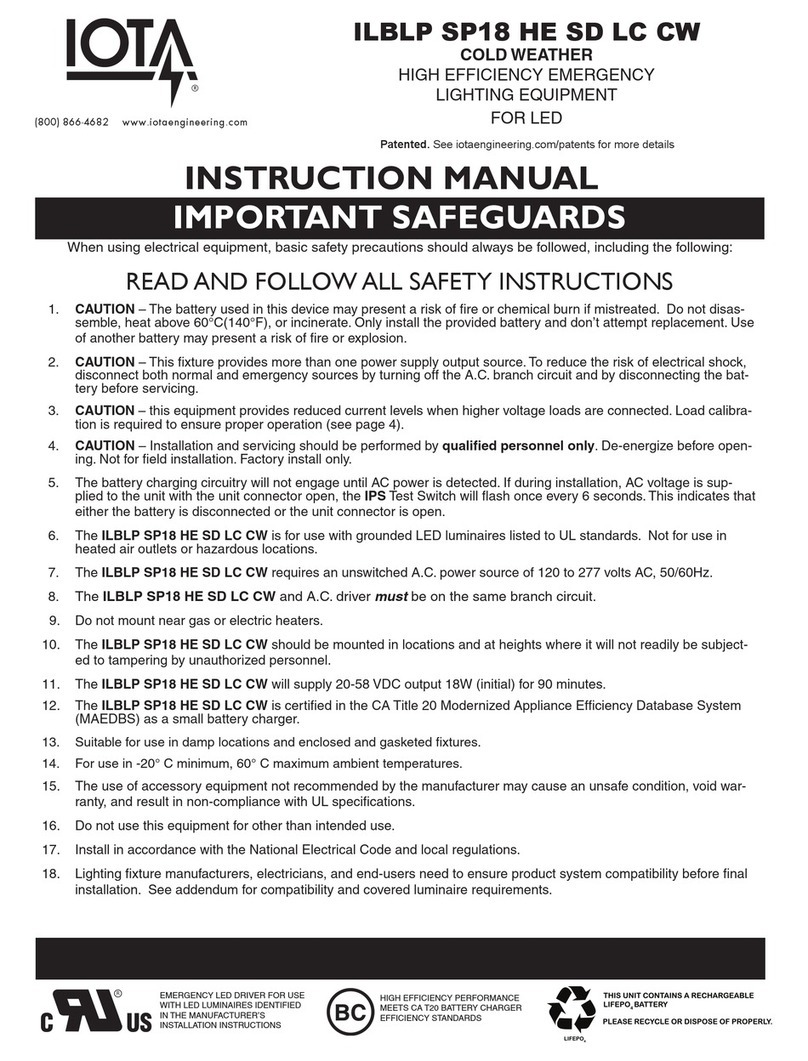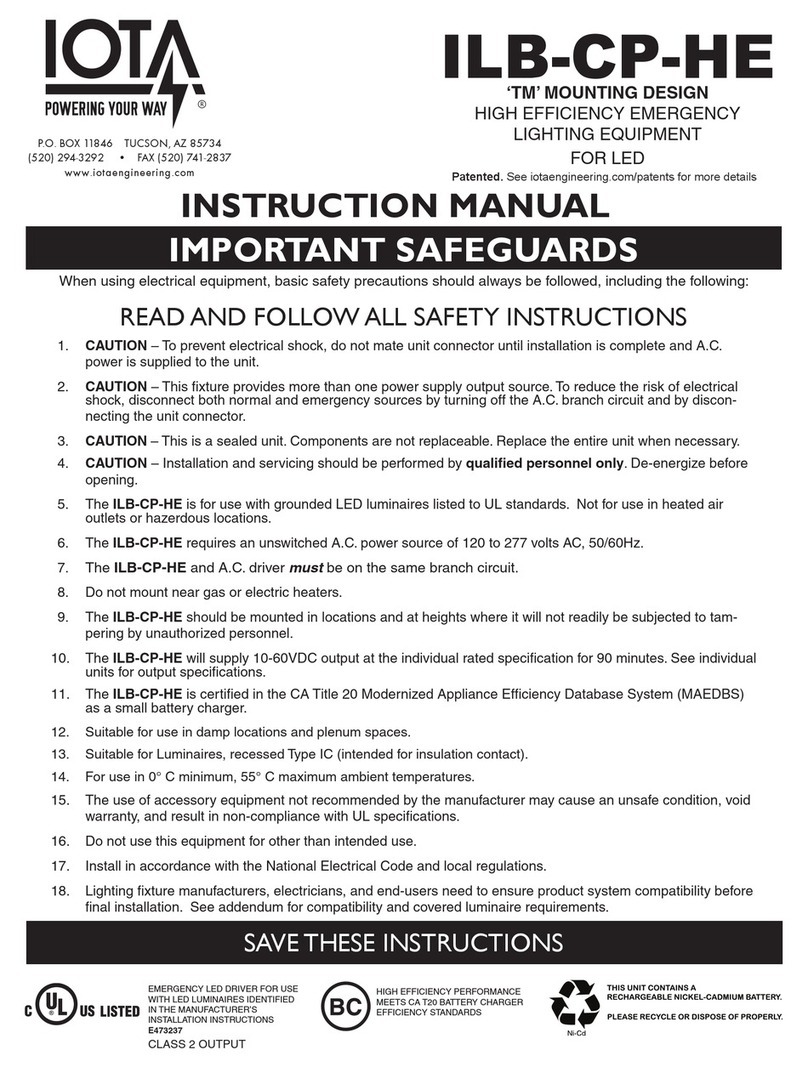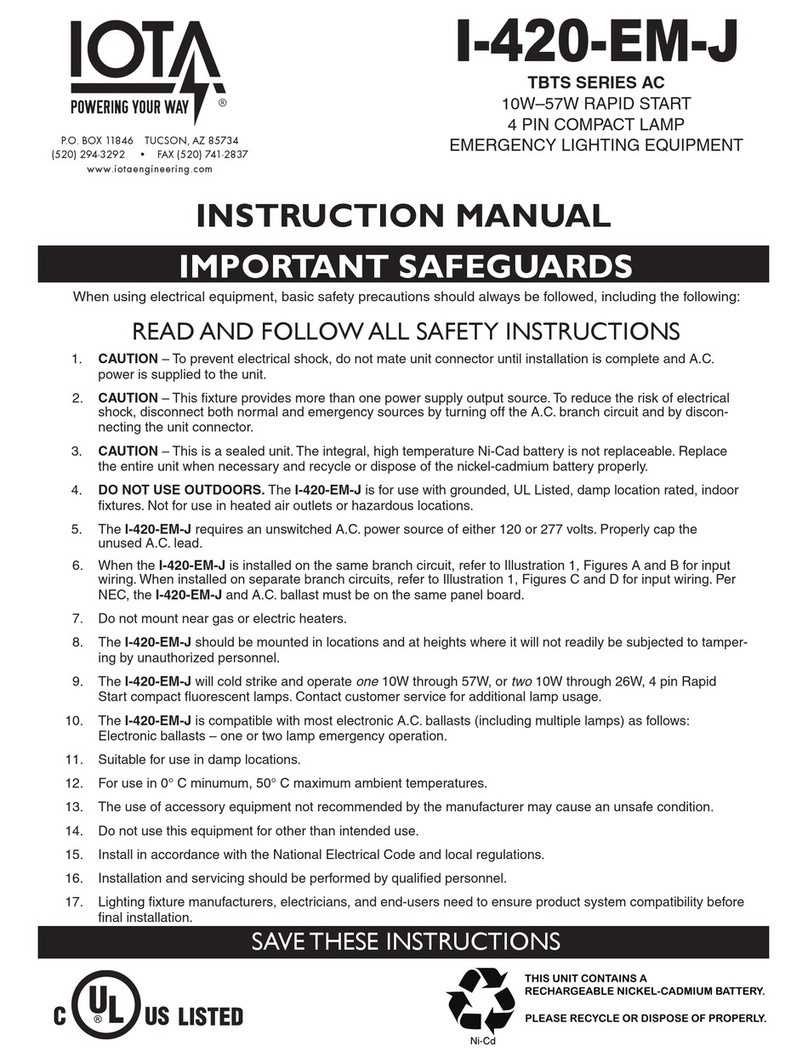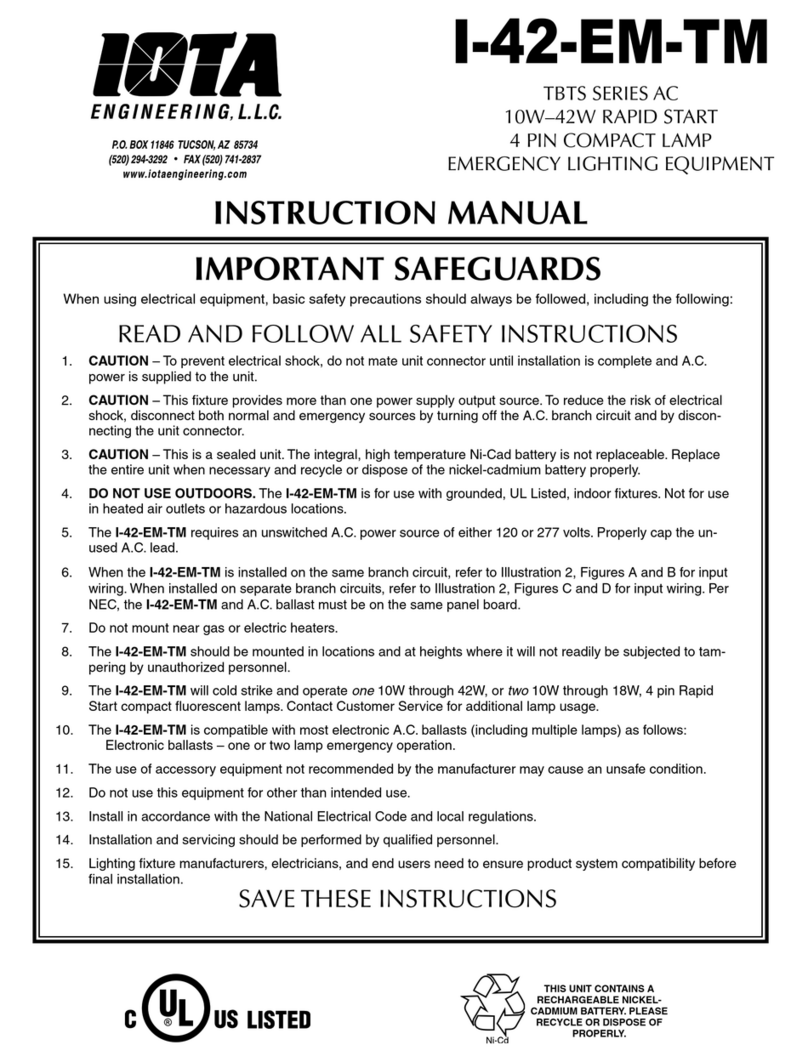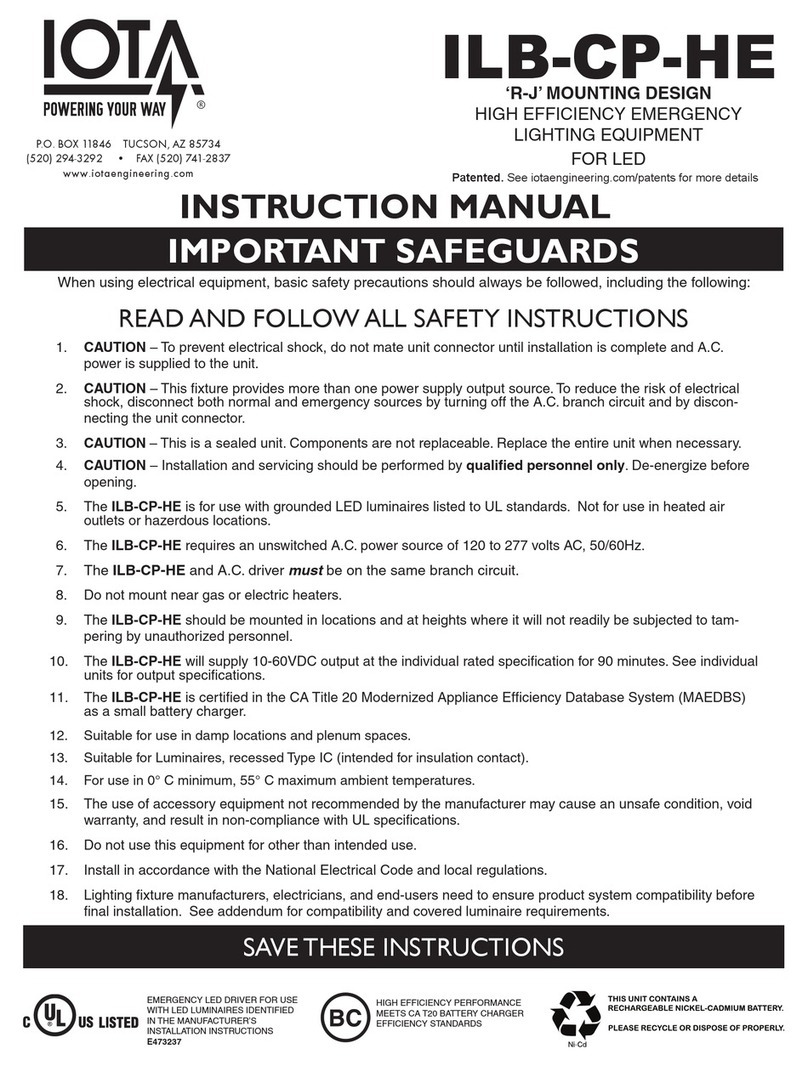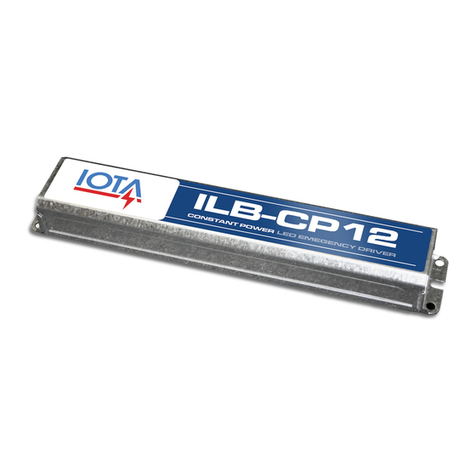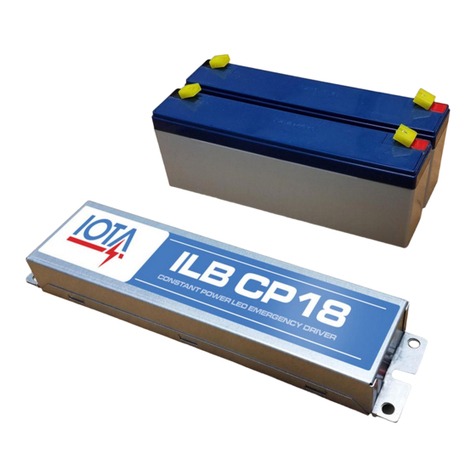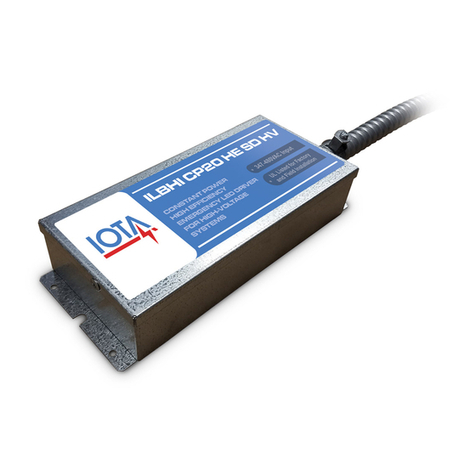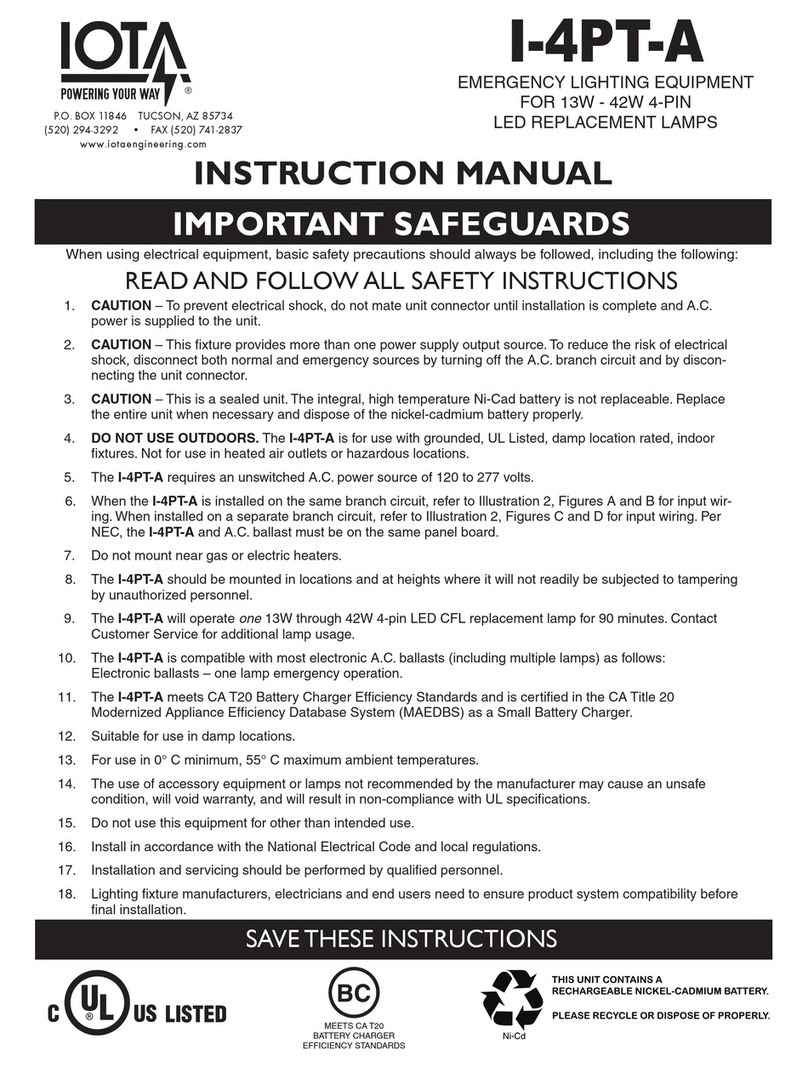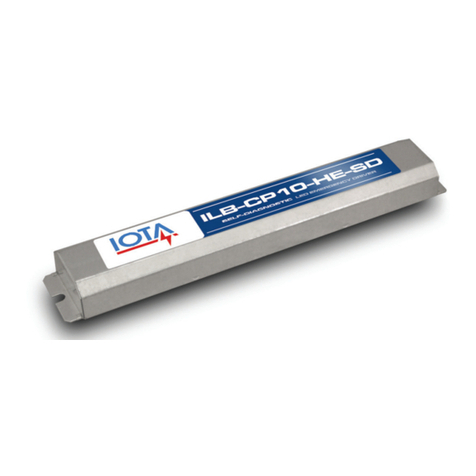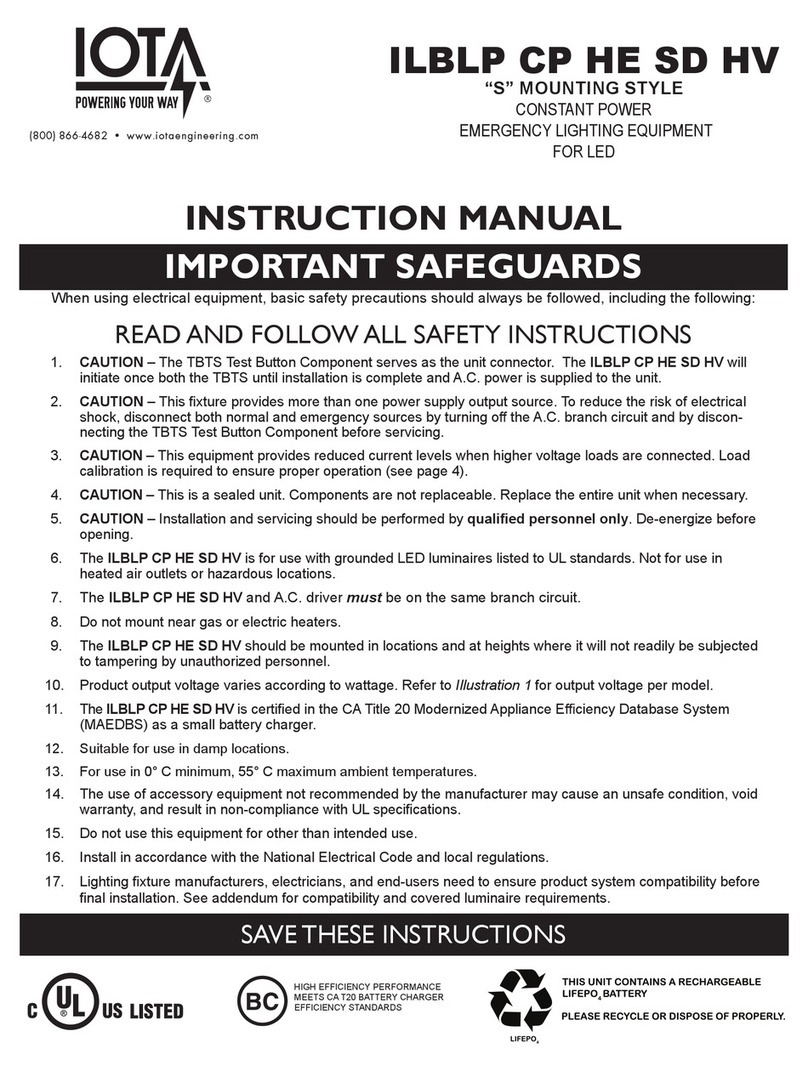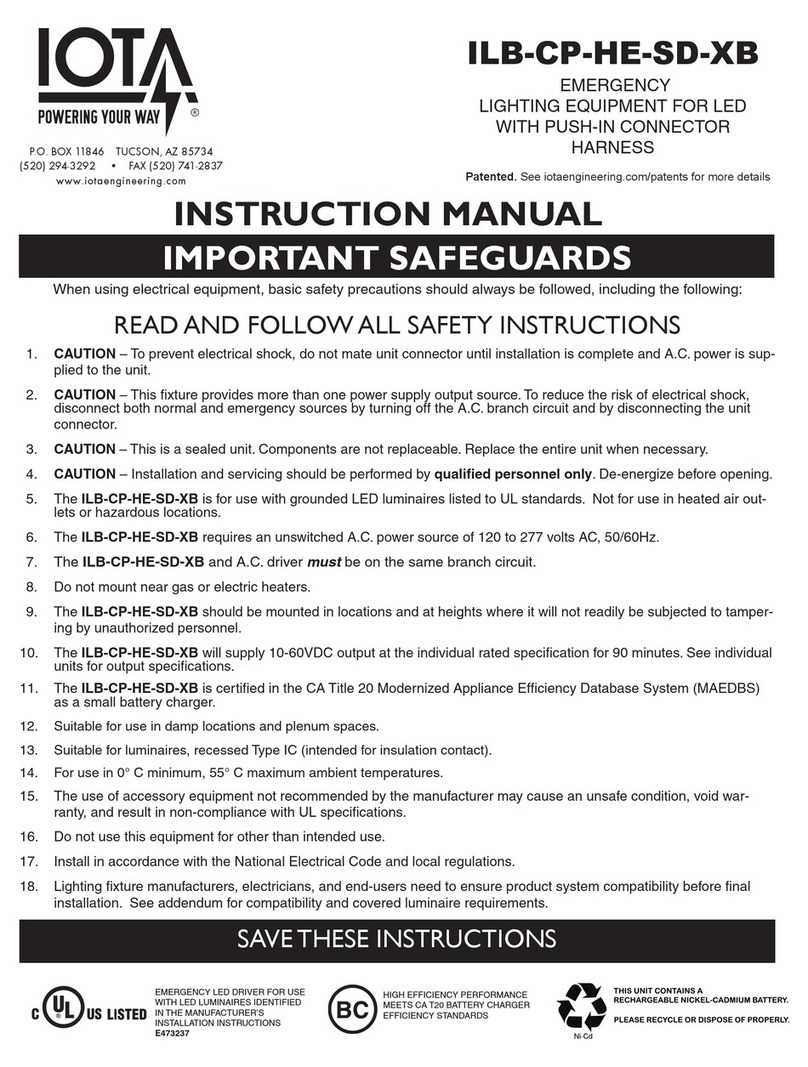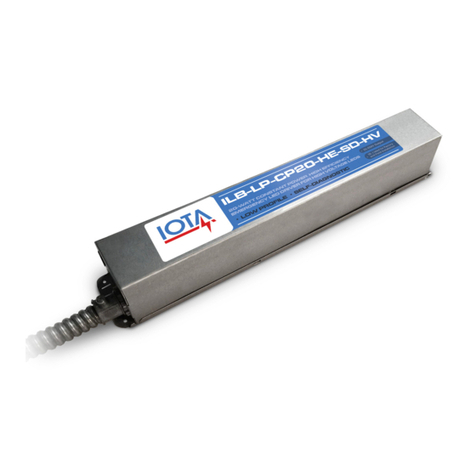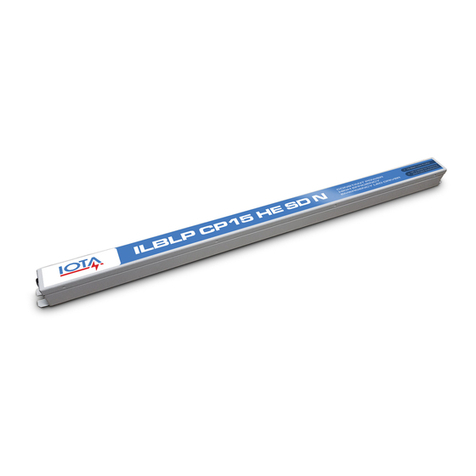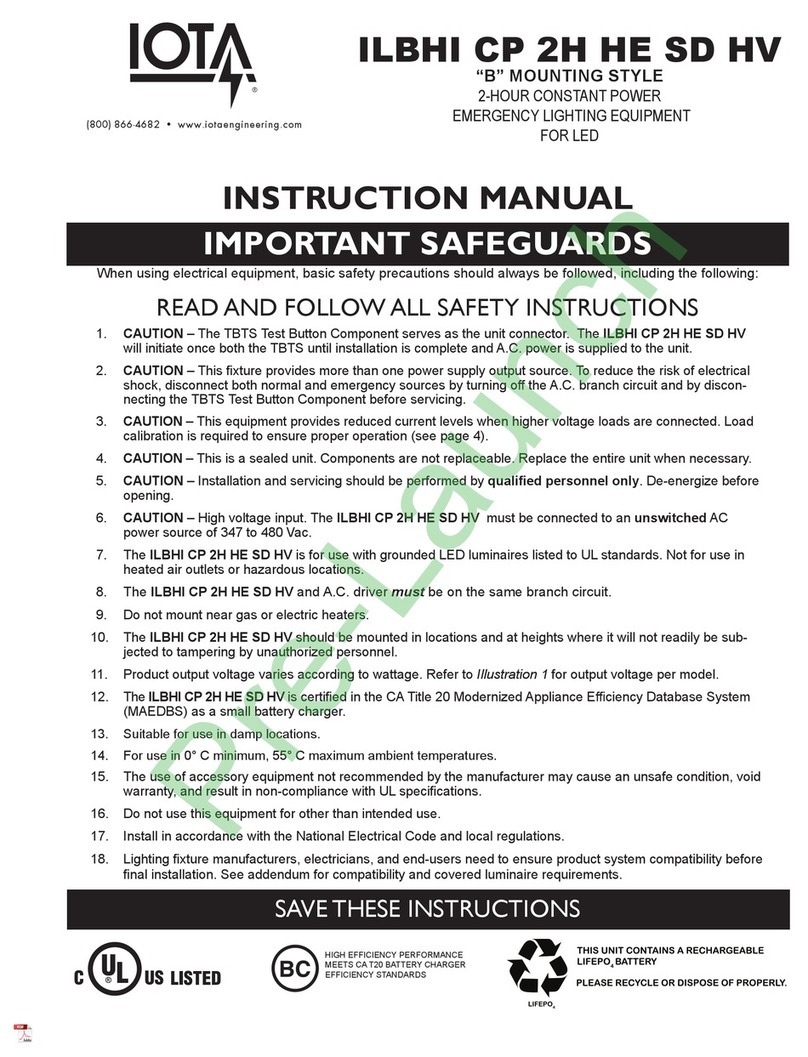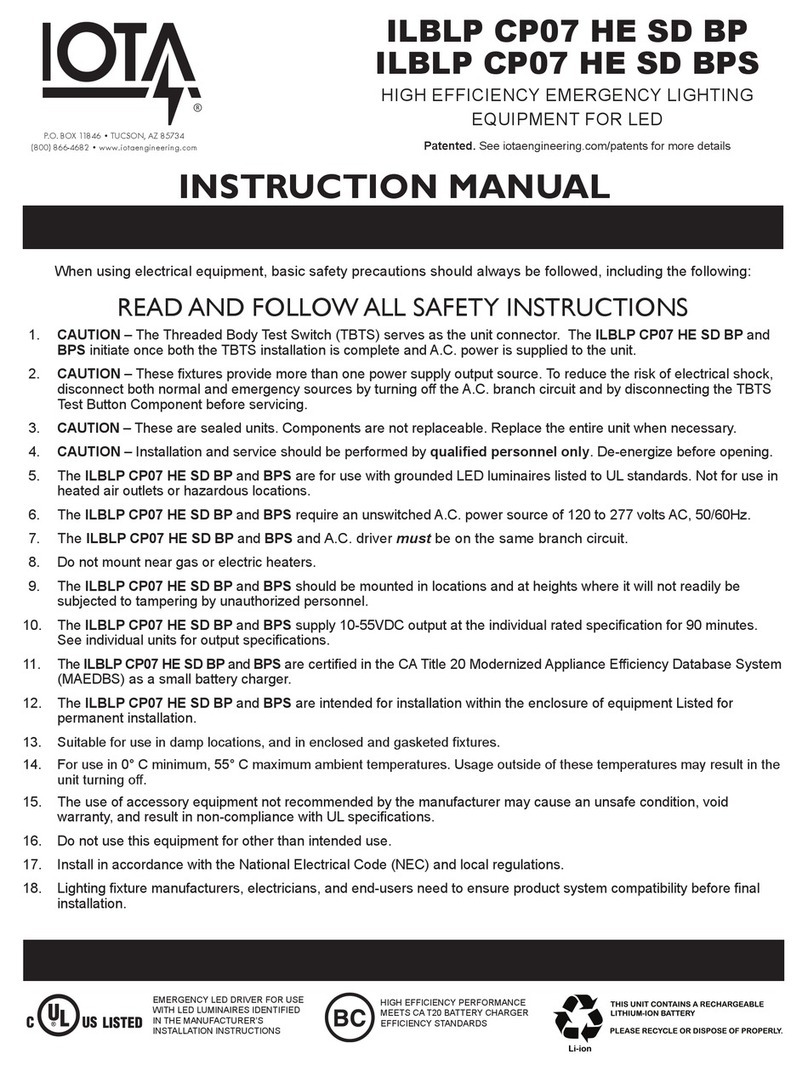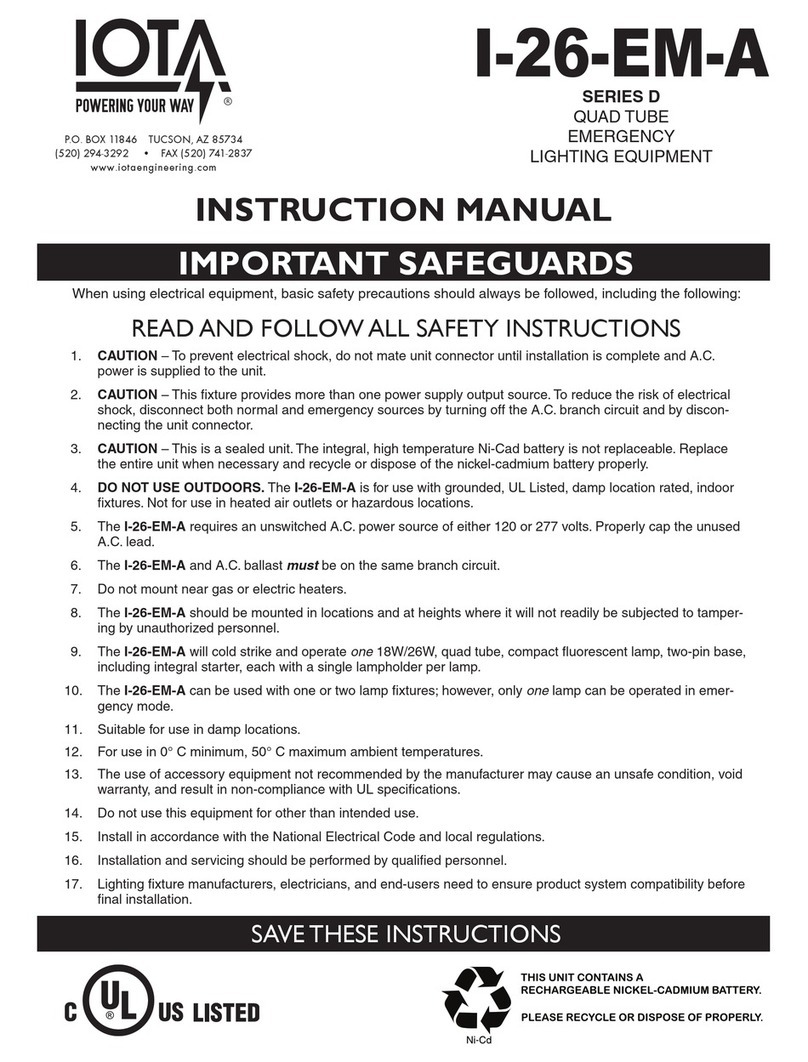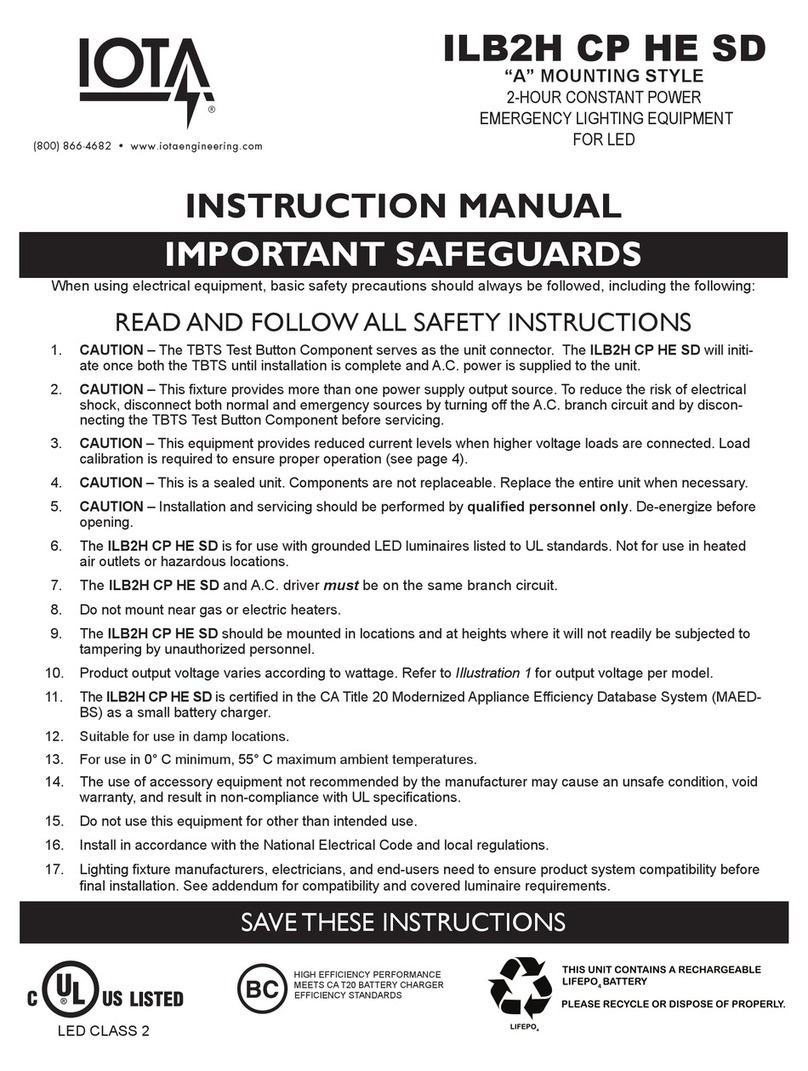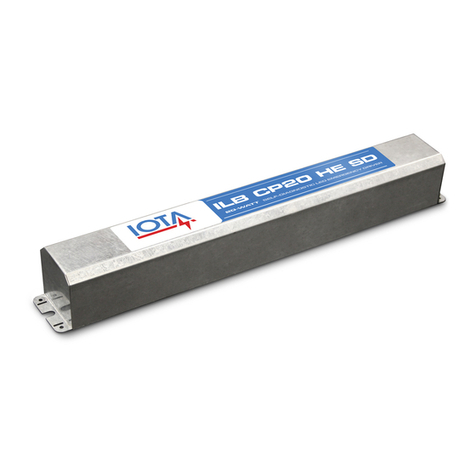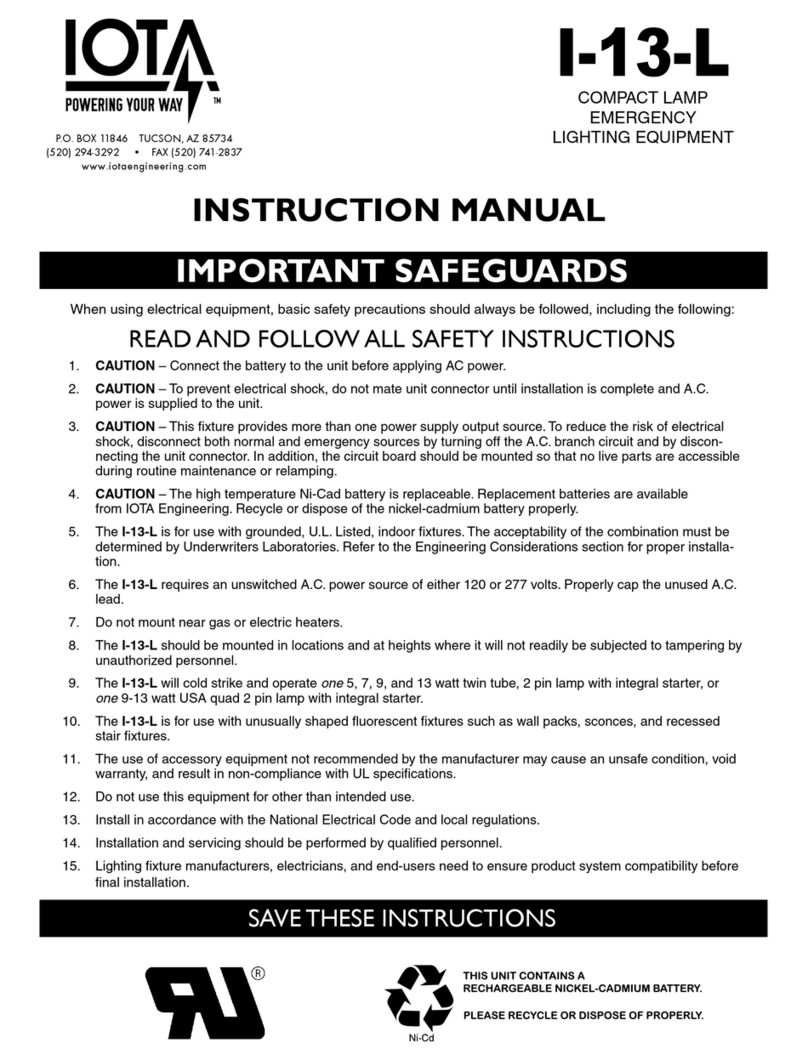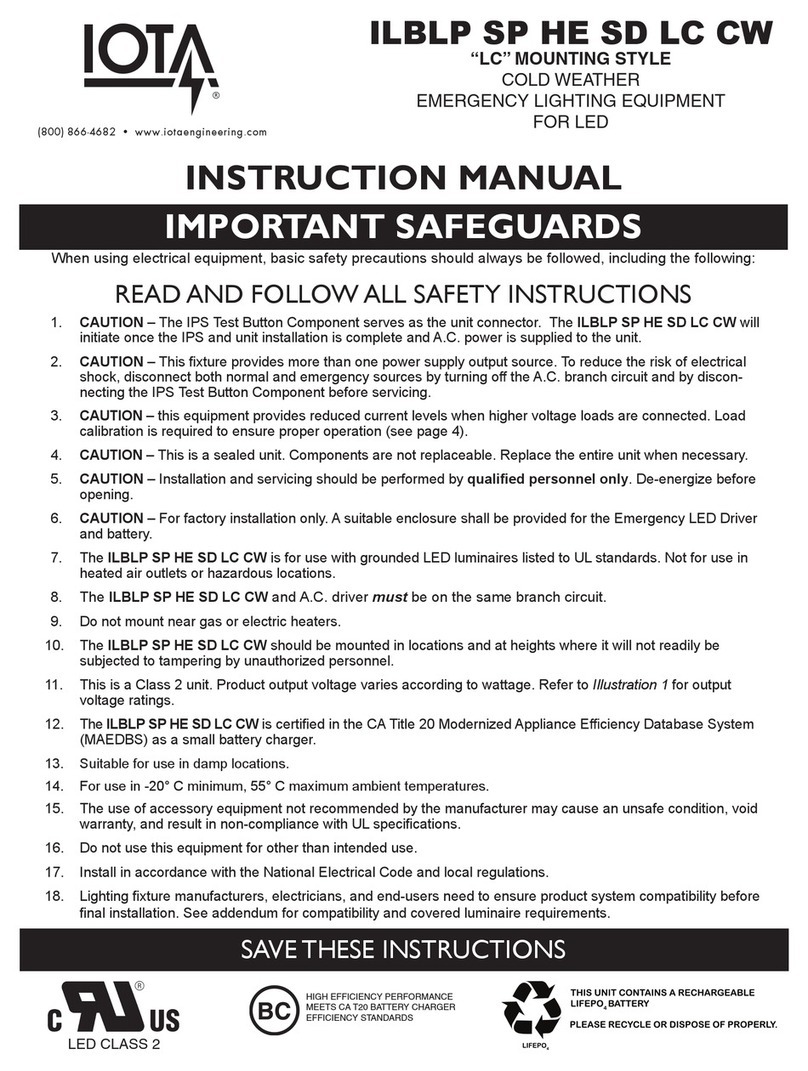
Page 4
Rev. 1900
68320-000
TESTING & MAINTENANCE
Pressing the TSPL turns off the light on the TSPL and forces the unit into emergency mode, interrupting power to the designated
A.C. ballast. The emergency lamp is now being lit by the P-320 unit. After releasing the TSPL, the fixture returns to normal operation
after a momentary delay.
Initial Testing – Allow the unit to charge approximately 2 hours, then press the TSPL to conduct a short discharge test. Allow a 24
hour charge before conducting a one hour test.
The P-320 is a maintenance free unit, however, periodic inspection and testing is required. NFPA 101, Life Safety Code, outlines the
following schedule:
Monthly – Insure that the TSPL is illuminated. Conduct a 30 second discharge test by depressing the TSPL. One lamp should oper-
ate at reduced output.
Annually – Insure that the TSPL is illuminated. Conduct a full 1½ hour discharge test. The unit should operate as intended for the
duration of the test.
“Written records of testing shall be kept by the owner for inspection by the authority having jurisdiction.”
SERVICING SHOULD BE PERFORMED BY QUALIFIED PERSONNEL.
Consult Customer Service or visit www.iotaengineering.com for current warranty information.
OPERATION
Normal Mode – A.C. power is present. The A.C. ballast operates the fluorescent lamp(s) as intended. The P-320 is in the standby
charging mode. The TSPL will be lit providing a visual indication that the battery is being charged.
Emergency Mode – The A.C. power fails. The P-320 senses the A.C. power failure and automatically switches to the Emergency
Mode. One lamp is illuminated, at reduced output, for a minimum of 90 minutes. When the A.C. power is restored, the P-320 switches
the system back to the Normal Mode and resumes battery charging. See page 1 of the Instruction Manual.
LAMP SELECTOR SWITCH
The P-320 has a lamp selector switch that can be used to optimize the performance. Refer to the table below for the optimal setting
of the lamp selector switch for your lamp type.
TROUBLESHOOTING
Problem Possible Cause
Emergency Lamp does not op-
erate when the TSPL Button is
pressed.
TSPL Charging LED
not on
Fixture does not operate in the
Normal Mode
1. Wiring to the lamp(s) is incorrect.
2. Lamp(s) are not inserted correctly.
3. Battery has not been charged for at least 1 hour.
4. TSPL is not inserted properly into the unit.
1. AC Power is Off
2. TSPL not inserted properly into the unit.
3. The wrong test accessory is being used.
1. Battery is not fully charged.
2. Wrong type or number of lamps connected
3. Battery is at end of life.
1. Wiring to the lamp(s) or normal ballast is incorrect.
2. Lamp(s) are not inserted correctly.
3. Lamp(s) are at end of life
4. AC power is off to the normal ballast (uses fixture switch)
Emergency Ballast does not
operate lamps in the emergen-
cy mode for at least 90 minutes.
Lamp Type Base Type Lamp
Wattage / Length
Number of
Emergency Lamps
Lamp Selector
Switch Position
T5, T8, T12
(5/8”, 1”, 1½”)
Long Compact
PL
Compact
PL
T5HO
SINGLE or BIPIN
BIPIN (G5)
4 PIN (2G11)
4 PIN (G24, GX24)
4 PIN (G24, GX24)
4 PIN (G24, GX24)
4 PIN (GX24)
13 - 26W (Quad Tube)
18 - 26W (Triple Tube)
32W (Triple Tube)
42W (Triple Tube)
24 - 54W (2’ - 4’)
18 - 39W
40 - 55W
1
14 - 24W (2’ - 4’)
28 - 40W (2’ - 4’)
40 - 215W (5’ - 8’)
1
2
1
2
1
1
2
1
2
1
2
1
1
2
1
B
A
B
A
A
B
A
B
B
B
A
B
A
A
A
A
SINGLE or BIPIN
If the sum of the Emergency Lamp rated watts
exceeds 40W the Selector Switch must be in
the B position.
Remove the locking pin
before adjusting the
Selector Switch.
